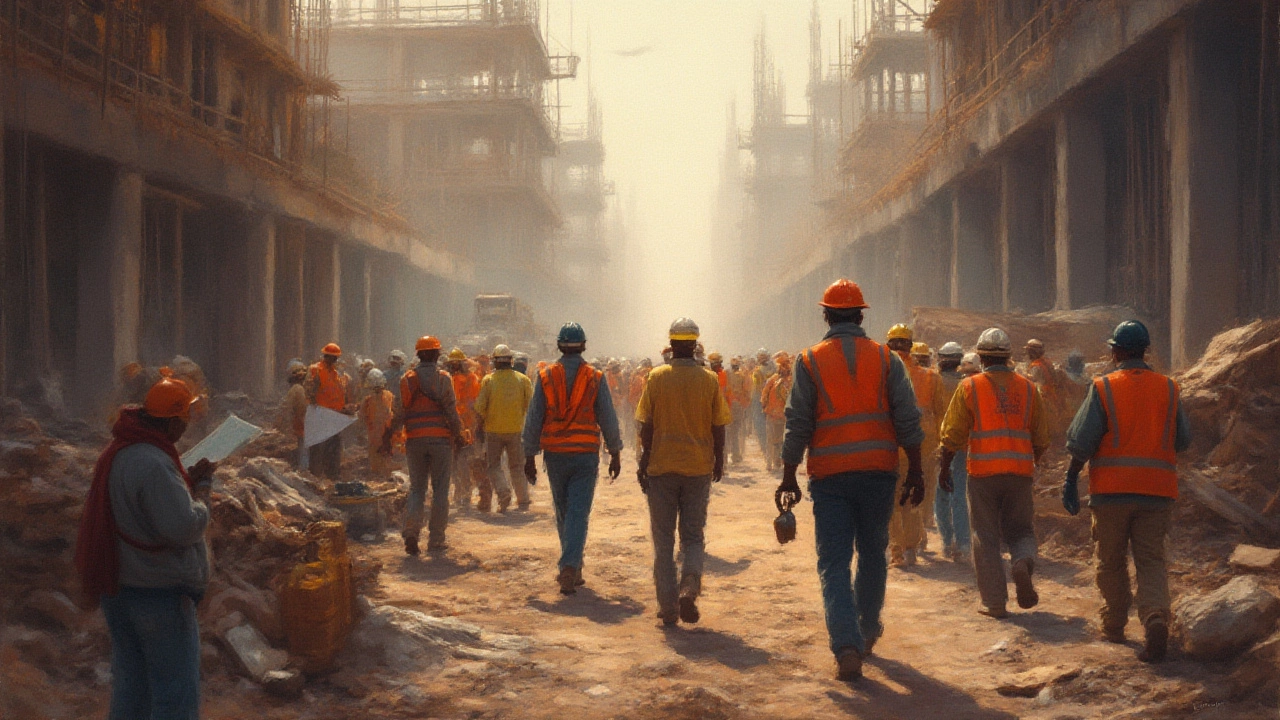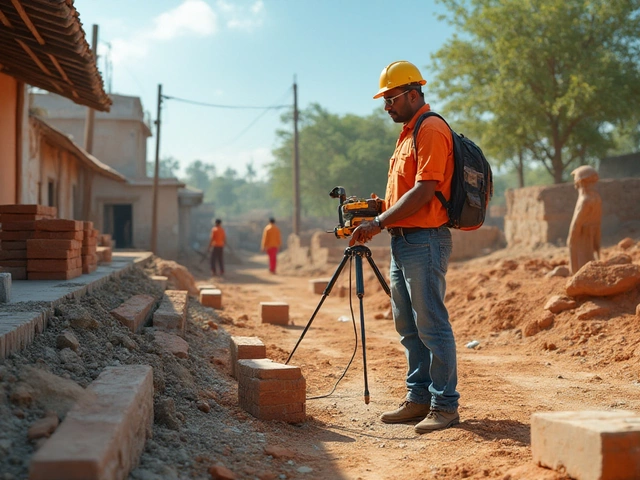Lower Tier Contractors Explained: Roles, Risks, and Real-World Tips
If you’ve ever been around a big construction project, you’ve probably heard people grumble about "lower tier contractors" and wondered what on earth that means. It’s not just paperwork talk—these folks are the hidden gears keeping big projects moving. But things can get messy if you don’t understand how they work. Stick around, because knowing who lower tier contractors are (and how they fit into the grand scheme) can save you from all sorts of headaches, drama, and maybe even legal nightmares.
Understanding Lower Tier Contractors: Who Are They and Where Do They Fit?
At its core, a lower tier contractor is someone who isn’t hired directly by the property owner or the main contractor (often called the “prime” or “principal” contractor). Picture a construction site: At the top you’ve got the owner, then right below sits the general (main) contractor running the show. But what happens when the general contractor brings on a plumber or electrician? That’s a subcontractor. Now, if that electrician hires a crew to run cable, or brings in someone to install smart home devices, those folks become lower tier contractors. Basically, it’s a chain—the further you get from direct connection to the project’s top boss, the lower your tier.
They're crucial for big jobs. Without lower tier contractors, you wouldn’t see such fast and specialized work getting done—think concrete finishers, window installers, or specialized safety inspectors. But while they make things go smoother, their position in the payment and communication chain complicates everything. For example, in an average commercial construction project in the US, there can be as many as five levels of subcontracting—that’s a lot of people between the owner and the guy pouring the sidewalk.
Payment is probably the biggest pain point. Let’s look at a typical payment chain:
| Project Role | Hired By | Usual Payment Flow |
|---|---|---|
| Owner | - | Pays Main Contractor |
| Main Contractor | Owner | Pays Subcontractor |
| 1st Tier Subcontractor | Main Contractor | Pays 2nd Tier Subcontractor |
| 2nd Tier (Lower Tier) Subcontractor | 1st Tier Subcontractor | Pays Suppliers or Workers |
This system means a single delay at the top hurts everyone below. Studies show that lower tier contractors report waiting up to 60% longer for payment than contractors higher on the ladder. And if the top folds or skips town? Lower tiers get squeezed. Sometimes they don’t even know who the owner is, and have little direct recourse except legal action, which is expensive and slow.

Why Lower Tier Contractors Face Big Risks (and What to Watch Out For)
There’s a lot of trust—sometimes misplaced. Lower tier contractors are often small businesses or even solo operators. They might not have the cash reserves to float expenses while chasing delayed payment. In the UK, one study found that 40% of lower tier construction contractors considered quitting the industry after not getting paid for more than 90 days. It’s brutal, and it’s the main reason they operate on razor-thin margins.
But payment isn’t the only quirk. Lower tiers have a harder time getting project info. Sometimes, they start work without seeing the full plans or scope, relying on what the higher-tier folks tell them. If there’s a change order that never makes its way down? Lower tiers can end up doing unpaid work. Miscommunication is baked into these chains, and mistakes at the top get amplified the lower you go. For instance, a glass installer might show up, ready to work, only to find out site prep is still weeks away—wasting time and burning money on labor they can’t bill anyone for.
Docs matter, too. Ever heard of “pay-when-paid” clauses? This bit of fine print says the main subcontractor only has to pay the lower tier once they themselves are paid by the main contractor. It shifts the cash flow risk down. If something goes wrong—say the owner goes bankrupt or refuses payment—lower tier contractors might have no legal cover to get what they’re owed. While some places (like California) restrict these clauses, many states still allow them, so lower tiers need to read the fine print like hawks.
There’s another wrinkle: liens. Lower tier contractors often depend on mechanics’ liens to get paid when things go sideways. But the process can be tricky. You need to follow strict deadlines, send the correct notices, and sometimes even file in the right order. A minor misstep? You lose your shot. For example, in Texas, you have to send a “third-month” notice no later than the fifteenth day of the third month after the labor was performed. Miss it, and your lien rights vanish.

How Lower Tier Contractors Can Protect Themselves (and Work Smarter)
If you’re a lower tier contractor, life can sometimes feel like walking on eggshells—so here’s what actually helps in practice. First, double-check every contract before you sign, especially those clauses about payment timing. Don’t settle for "pay-if-paid" unless you know the risk and can afford the wait. Real-life tip: Try to negotiate “pay-when-paid”—it’s less risky, because it just sets a reasonable time frame rather than shifting all the risk to you.
Second, make friends with the paperwork. Even if chasing forms feels like pulling teeth, submitting invoices and change orders on time is how you build a clear record. If you’re owed money, you need a paper trail that shows exactly what work was done, when, and under what terms. Digital project management tools help; more than half of the US’s top contractors now require digital reporting, making it easier for lower tiers to document everything and keep everyone honest.
Stay visible to the folks up the chain. That means regular touchpoints: check in on project status, confirm any changes, and make sure your name isn’t forgotten when checks go out. A quick weekly email or shared progress photo can make a huge difference when the main sub is dividing up payments. And if you’re unsure who’s at the top, don’t be shy—ask for a project directory before you even start work. The more you know about the chain, the more leverage you’ll have if something goes wrong.
And don’t neglect lien rights. Mark the notice deadlines on your calendar, and send any required paperwork on time. There are apps now that track these dates for you—a simple step, but it could mean finally getting paid for a job that’s gone sour. Fun fact: In 2023, contractors who sent preliminary notices on time had almost double the success rate in collecting overdue payments.
Don’t forget insurance. Lower tier contractors are the most at risk for accidents (workers comp claims are highest at the “sub-subcontractor” level, according to 2022’s OSHA reports). Make sure your own coverage is current, and don’t assume you’re covered by the higher-up’s policy. A gap here can sink your business if something goes wrong.
Lastly, grow your network. Most lower tier contractors get future work from referrals up the chain, not advertising. Show up, do your work well, and protect yourself in writing. The good contractors get called back, the flaky ones do not. Simple as that.
- Negotiate realistic payment terms
- Send and file paperwork early
- Keep clear communication with the main contractor
- Track lien dates carefully
- Stay insured—don’t rely on anyone else’s policy
When you hear the phrase lower tier contractor, don’t think "less important." These are the folks in the trenches, doing the hard work, often in the scariest position when things go wrong. Understanding their world isn’t just good business sense—it’s how you avoid getting sucked into the next nightmare construction dispute.







Comments